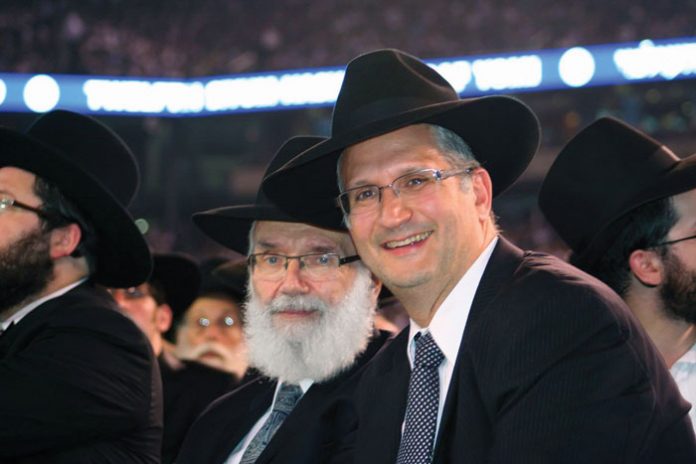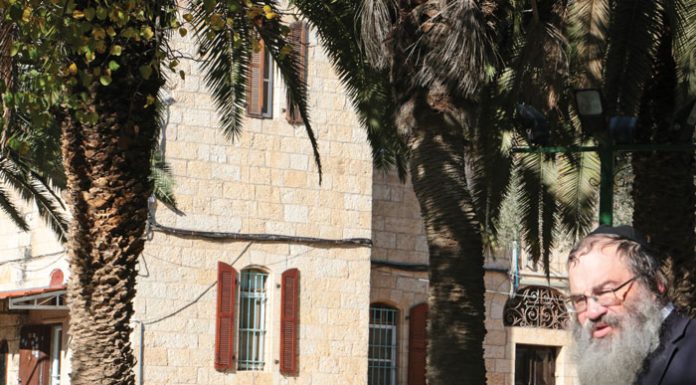Rav Yosef Sholom Kahanaman, the famed Ponovezher Rav, is said to have quipped after his vast travels across the globe to raise funds for his yeshivah in Bnei Brak, “Every place on the globe I went, I saw two things—Coca-Cola and Chabad.”
Today, he would have undoubtedly added another item: an ArtScroll volume. From shtieblach spanning the globe, to traditional (and not so traditional) synagogues across the face of the Earth, ArtScroll is part and parcel of the infrastructure of religious service. From the Kosel to a classroom in Phoenix, from a campus in Harvard to Kollel Chazon Ish in Bnei Brak, ArtScroll has become an inseparable part of Torah education.
Klal Yisrael has embraced ArtScroll sfarim in a manner probably not seen since Gutenberg created the printing press.
Every accomplishment of magnum proportions needs a vision, and every organization needs a leader. The reality of ArtScroll required someone who could see far beyond what others thought possible. Someone who believed in his own dream to enrich klal Yisrael, and trusted that the masses would join him. Rabbi Meir Zlotowitz, z”l, saw a need before the world saw it. He was ahead of his times, and he was a man on a mission. He was a highly driven person, yet it was not for his own interests. He channeled his energy and foresight into harbatzas haTorah. With great siyata diShmaya, he succeeded.
I had the opportunity to sit down with R’ Gedaliah Zlotowitz, the oldest son of Reb Meir, to capture some insights about his father’s prodigious journey from the first Megillas Esther some 40 years ago, to the Torah revolution that has become both ubiquitous and synonymous with the distinguished Torah publishing house.
“As a young talmid in RJJ,” he said, “my father had originally planned on going on to Beis Medrash Govoha to learn under the tutelage of Rav Aharon Kotler, zt”l. Being an East Side talmid, he first went to see Rav Moshe Feinstein, zt”l, in MTJ. He was captivated, and he decided to learn there. It was a decision that would impact the rest of his life and his work. It was there that he became a talmid muvhak and extremely close with Rav Moshe. After Rav Moshe was niftar, he continued this close kesher with, ybl”ch, Rav Dovid Feinstein.
“My father was a creative and original thinker. He loved to write and he also loved to draw. As a young man, he wrote for the Torah pamphlets produced by Tz’irei Agudas Yisrael, and as a youngster in Camp Munk, he began writing a translation on Mishnah Berurah. It was his creativity and sense of design that led him later on to open ArtScroll studios, a printing business, focusing on wedding invitations, kesubos and calligraphic Torah works.
“It was in late 1975 that my father wrote an English translation and commentary on Megillas Esther. It was in memory of his good friend, Rabbi Mair Fogel, z”l. As an admirer of Reb Nosson Scherman’s writing in The Jewish Observer, my father asked him to write the introduction.”
The response was beyond what anyone could have imagined. The new Megillas Esther sold out immediately, as did more than four printings that ensued. An astounding 20,000 copies were sold in one year, an unprecedented amount for Jewish literature. But what Reb Meir saw was an unquenched thirst for English printed sefarim. He decided to undertake the mission of translating and producing the other four megillos.
The response again was overwhelming. The megillos flew off the shelves. ArtScroll was born.
“My father saw what no one else in klal Yisrael noticed. People had a tremendous thirst for knowledge of Torah. The average layman felt ‘closed out’ of many parts of Torah. Back in the 1970s, Torah learning was not as widespread as it is today. Daf Yomi shiurim were few and far between. In January 1968, the Siyum Hashas was held at the Bais Yaakov of Boro Park with 300 people in attendance. Just seven years later in 1975, it was held in Manhattan Center and attended by over 5,000 people. Besides for bnei yeshivos and kollel yungeleit who spent their days and nights immersed in Torah, most people were not learned, and not involved in Torah learning.
“The only English-language Torah literature available at the time was the archaic translation of Chumashim that graced the shelves of some American shuls. My father’s easy-to-read, English ArtScroll megillos changed that. People saw Torah come alive. The mefarshim on the megillah, once understood only by bnei Torah and talmidei chachamim, were now able to be studied by the masses. Klal Yisrael felt connected. Yidden felt enlightened. When my father saw this unfolding before his eyes, he decided to change his focus. This was his calling. He gave up the business of ArtScroll printing, and switched gears into this new project. He called Rabbi Scherman, ‘You have to choose one or the other. Either you stay as a menahel in Stolin, or you have to join me here—this is the future.’





















